A New Normal in Pharmaceutical Waste Management
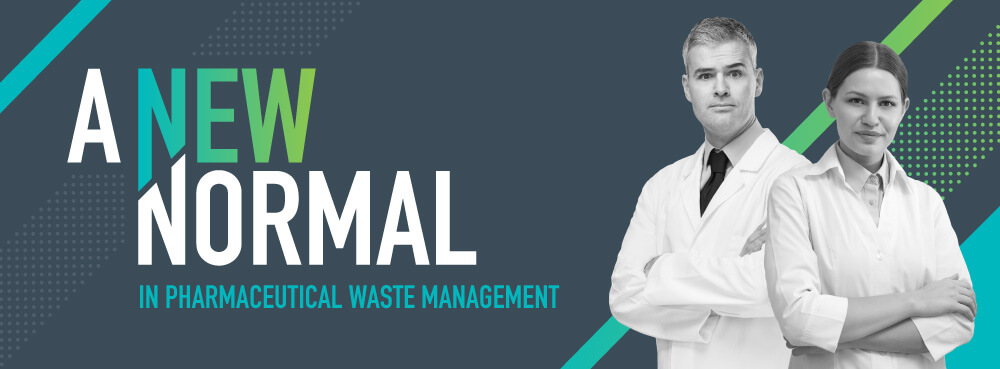
Bring your pharmaceutical waste management into the modern era - by implementing a color-coded waste segregation program.
The disposal of medications is one of the most misappropriated waste streams generated out of a hospital, pharmacy or healthcare environment. Its differing tiers of risk association and the complexity of navigating these tiers renders users to either be extra diligent in waste categorisation and secure disposal, or woefully complacent.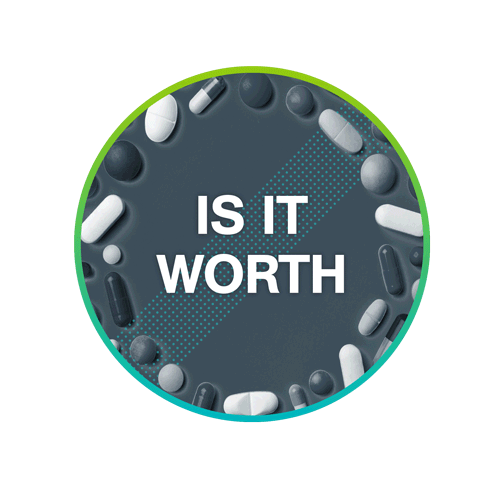
In direct proportion to the risk it poses to humans and the environment, it is time to introduce a New Normal in Pharmaceutical Waste Management. As Arthur Burt once said "Nothing happens until the pain of remaining the same outweighs the pain of change."
Explore ways to normalise your pharmaceutical waste program’s costs, risk and environmental impact. Feel free to jump ahead by clicking one of the topics below:
- Pharmaceutical Waste Containment; putting safety and security first
- Eliminating the risk and environmental burden of disposable containers
- Eliminating risks, environmental and cost impact
- Lowering costs by upwards of 50% through non-haz pharma segregation
What does a safe pharmaceutical waste container look like?
Working within hospital environments for more than 30 years across six countries, we have seen pharmaceutical waste put under increased scrutiny and national regulation review due to the proliferation of opioid abuse globally. Beyond the fines and legal implications of non-compliance, there lies something much more important – human life, and therein a responsibility on healthcare institutions to provide a safe risk-free environment for clinical staff. 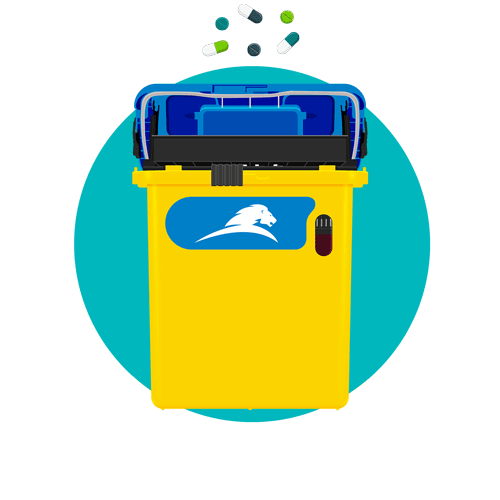
What are the important safety and security features of a pharmaceutical waste container?
- Inbuilt tamper-proof locks which can be secured once the container is full
- Locking brackets that secure a container onto a wall, preventing unauthorised removal
- Restricted container opening that prevents access to contents
- Inbuilt overfill mechanism to prevent overflowing of contents
- Single piece design, no detachable lids or components that could be disassembled
- Mobile ability to be safely wheeled as close as possible to the point of waste generation
- Hands-free disposal design, eliminates risk of needlestick injury or potential infection transfer risk
Sharpsmart's Pharmaceutical disposal container not only meets, but exceeds all of these safety and security requirements. As an ISO approved container for the containment of non-hazardous pharmaceuticals, it can be transported without assembly or secondary packaging and is the only container in the UK without a single recorded incidence of sharps penetration. Furthermore, Sharpsmart' universal bracketing system enables the pharmaceutical containers to be used with sharps, clinical waste and trace cytotoxic waste containers for on the spot segregation as an integrated mobile solution.
Eliminating the costs, safety risks, and environmental burden of disposable containers
Let’s cut straight to the point… when is it ever beneficial from a cost or environmental standpoint to needlessly throw away plastic? The dramatic increase in disposable plastic products produced over the last several decades has been extraordinary. Of the 300 million tons of plastic manufactured every year, only 50% of it is for single-use purposes; where reusable products are an option, we should exercise environmental stewardship.
In the healthcare industry, 33% of plastic generated from healthcare waste streams is the plastic container itself… i.e. you’re not only paying more for a disposable container, but you’re also paying to dispose of overclassified plastic! Switching to a reusable non-hazardous waste container will drive both safety and environmental outcomes:
- Eliminate the purchase and disposal cost of single-use containers for non-hazardous waste
-
Protect staff with a container designed with safety features comparable to the risk profile of pharmaceuticals

-
For every 1 Sharpsmart container you use, you save 800+ containers from being manufactured and landfilled
Pharmaceutical Waste Types
It is estimated that more than £300 million of NHS prescribed medicines are wasted each year.
“The cost of medicines in England in 2013 exceeded £15 billion, including costs in hospitals. In 2013, over 1 billion prescription items were dispensed in the community in England. This is an average of 2.7 million items every day…On average, 18.7 prescription items were dispensed per head of population in England in 2013.”1
The 2010 report Evaluation of the Scale, Causes and Costs of Waste Medicines produced by York Health Economics Consortium and School of Pharmacy University of London estimated the national figure of pharmaceutical waste to be £300 million.
Pharmaceutical waste can be split up into five types:
- Non Compliance : The patient does not take medicines as prescribed. e.g. taking irregularly or taking in incorrect dose amounts
- Intentional Non Adherence : The patient stops taking medication due to personal beliefs or the experiencing of adverse side-effects
- Unintentional Non Adherence : The patient ceases their medicine intake and/or forgets to take it at the correct prescribed intervals medicine
- Non-Preventable Waste : The patient dies and unused medicines are wasted, a change in treatment means current prescribed medicines are no longer needed or medicinal drugs are contaminated and no longer fit for purpose
- Preventable Waste : The patient or a medical institution stock piles medicines “just in case”. All items from repeat prescription are dispensed even if patient no longer takes the medicine. Out of date stock is disposed of
The impact of incorrect disposal on the environment
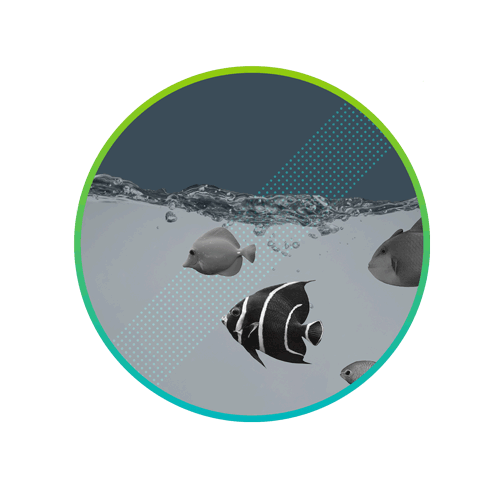
Hundreds of active chemicals used in human or animal medicines (and their metabolites and degradation products) contaminate water and soil. Some of these pharmaceuticals are persistent, while others, which are termed pseudo-persistent, are found in the environment because of their frequent and extensive discharge. Pharmaceuticals have a very wide range of effects; in rivers they can threaten drinking water resources and aquatic wildlife and in oceans, ground-water and highly polluted rivers, levels worldwide the pollution levels can range from nanograms per litre (ng/L) (or parts per trillion 1012) to milligrams per litre (mg/L) (or parts per million 106).
A recent study published by Brighton Researcher Dr Wulan Koagouw in 2021 contributes to the global evidence of pharmaceutical pollutants contaminating seafood; in her studies, Dr Wulan found even a low concentration of paracetamol exposure could cause serious damage to marine life, and the future ingestion of these same fish and shelfish by humans. To protect human life, and our environment at large, it is the responsibility of every healthcare facility and medical practitioner to be mindful about pharmaceutical storage and disposal; medicinal drugs should never be disposed of down the sink or drain.
Incorrect pharmaceutical waste classification can have the following impact:
- Inflated costs by overcategorising non-hazardous pharmaceuticals
- Risk of fines and compliance infringements for under-classified hazardous waste being disposed into non-hazardous waste streams such as clinical infectious waste, cytotoxic or "blue-lidded" medicinal drug containers
- Environmental risk of hazardous drugs being treated incorrectly (pharmaceuticals must be treated by high temperature incineration)
- Pharmaceuticals exposed to unauthorised access and misuse, either through improper storage, use or disposal
Compliance, Duty of Care and Pharmaceutical Cost Management
Implementing an effective pharmaceutical waste program requires a holistic look at everything that impacts waste identification, disposal and movement – and that requires a look at not only the systems put in 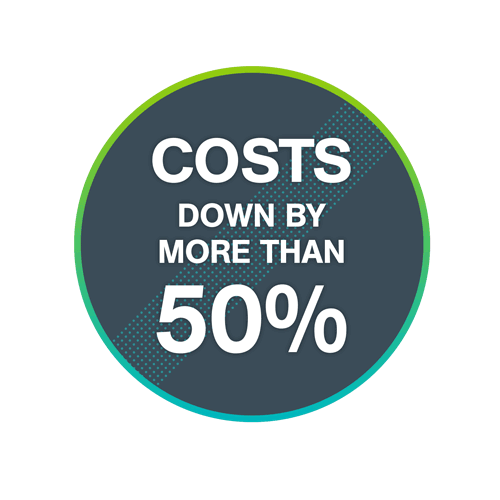 place, but also the humans!!! And when humans are involved, unfortunately there’s no “magic pill” solution for getting results, just a very concerted and focused plan on developing a right-fit program that is simple for clinicians and clinical staff to adopt.
place, but also the humans!!! And when humans are involved, unfortunately there’s no “magic pill” solution for getting results, just a very concerted and focused plan on developing a right-fit program that is simple for clinicians and clinical staff to adopt.
Like many hospitals we have worked with, Mission Hospital had no clear waste segregation plan for its pharmaceutical waste management. We won’t go through the details of what we did… you can find out more here. But suffice to say, after our team implemented a full segregation program, Mission’s hazardous waste volume went down to 6 x 55gallon boxes each week and reduced their waste disposal spend by more than 50%! If you’re curious…
Safe Management of all waste medicines falls into a Duty of Care; You must make sure:
- your waste is stored, handled, recycled or disposed of safely and legally
- your waste is stored, handled, recycled or disposed of only by licensed individuals or businesses
- you record all transfers of waste between your business and another business, using a waste transfer note (WTN)
- you keep all WTNs, signed by both businesses, for at least two years
- you record any transfer of hazardous/special waste between your business and another business, using a consignment note
- you keep all consignment notes, signed by both businesses, for at least three years.

The future of pharmaceutical waste management is here
The opioid crisis in the United Kingdom has revealed the fragility of our human environment and exposed the need to remove the ability for misuse. A New Normal in pharmaceutical waste management requires a higher standard of safety and security in waste containment, and a dedication to environmental stewardship that protects our planet for years to come. Talk to us about how Sharpsmart can partnership with your organisation in implementing an effective pharmaceutical waste program.
1 Health and Social Care Information Centre. Prescriptions Dispensed in the Community, England 2003-13. HSCIC, Leeds, 2014. www.hscic.gov.uk/catalogue/PUB14414/pres-disp-com-eng-2003-13-rep.pdf
